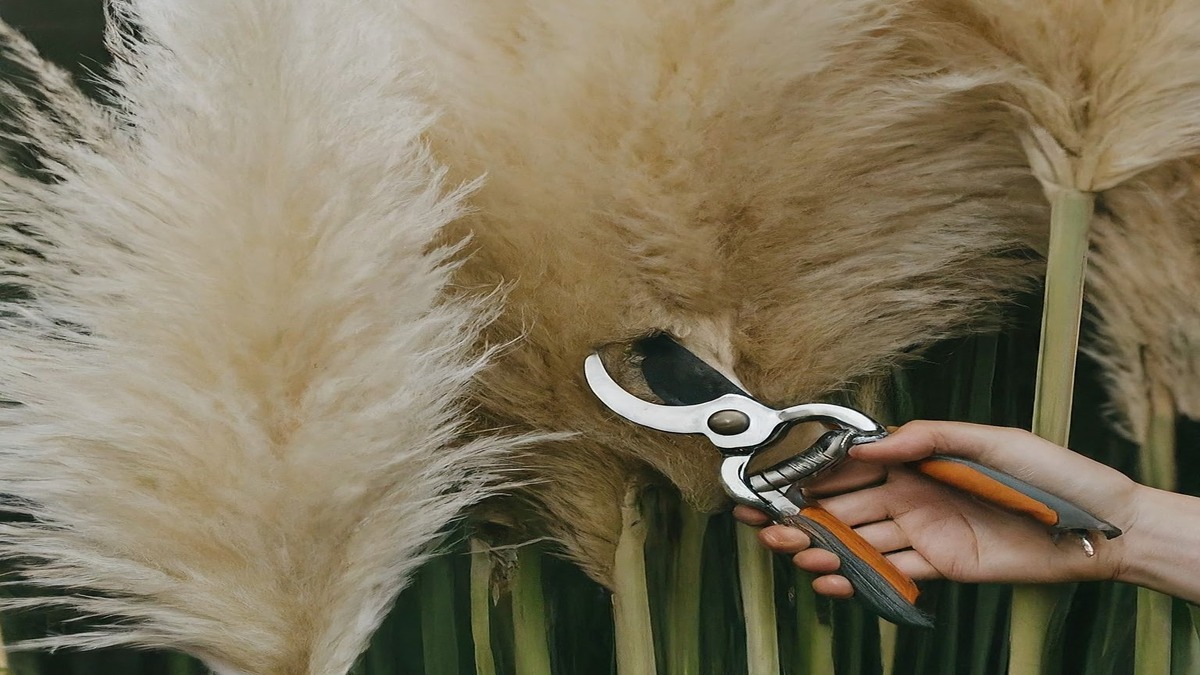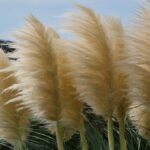What happens if you don’t prune pampas grass?In the world of gardening, there are few sights as breathtaking as a well-maintained pampas grass. Its towering plumes and feathery texture can transform any landscape into a tropical paradise. But what happens when this majestic plant is left unpruned? In this blog post, we delve into the consequences of neglecting to prune your pampas grass, exploring the impact on the plant’s health, aesthetics, and surrounding ecosystem. Whether you’re a seasoned gardener or a curious newbie, join us as we unravel the mysteries of pampas grass care. Let’s embark on this horticultural journey together!
What is Pruning and Why is it Important for Pampas Grass?
What is Pruning?
Pruning is a standard horticultural practice that selectively removes branches, stems, buds, or roots from plants. More specifically, pruning is the deliberate removal of tree branches and limbs to achieve the specific objective of altering a tree’s health and form. The goal is to remove unwanted branches, improve the tree’s structure, and direct new, healthy growth.
Why is Pruning Important?
Pruning is incredibly impactful and needs to be done correctly and at the right time. It helps ensure the tree stays healthy by increasing airflow and light penetration. By pruning the tree, you also remove dead, damaged, and dying branches. This not only keeps the tree safe but also removes hazards to people and structures around the plant. Pruning provides you with a way to manage the aesthetics of a tree or shrub by making selective cuts to control its form and structure.
Specific Benefits of Pruning Pampas Grass
Pruning pampas grass not only helps maintain its desired height and promote new growth, but it also controls this invasive species from overtaking other plants and flowers. Once established, pampas grass is low maintenance and only requires yearly pruning to keep it neat. Pruning pampas grass correctly can help ensure the plant establishes good form and structure. It also helps to promote new growth and can even help to reduce the size of the plant. Pruning pampas grass in the early spring gives the newly emerging foliage the chance to get more light when older material is removed. This makes the plant look tidy and healthy.
Consequences of Not Pruning Pampas Grass
Overgrowth and Its Impact on the Plant’s Health
Pampas grass is a fast-growing plant that can quickly become too large for its location if it isn’t pruned regularly. Overgrowth can lead to the plant becoming weak or even rotting in its center. This can result in the plant looking tired and out of control. Overgrown pampas grass can also block sunlight from reaching other plants below it, reducing their growth.
Increased Risk of Diseases and Pests
Leaving dead or diseased plant material can lead to the spread of diseases and pests. Overwatering can lead to root rot, affecting the health of your pampas grass. Regular pruning helps prevent overgrowth and promotes a more compact and aesthetically pleasing appearance for pampas grass.
Aesthetic Issues in Your Garden or Landscape
If left unpruned, pampas grass can easily get out of control and grow to a larger size than you can accommodate in your garden. Overgrown pampas grass may start to bend over and block walkways or obstruct views. This can lead to your garden or landscape looking untidy and unmanaged.
Potential Fire Hazards from Dry, Unpruned Grass
Pampas grass creates a fire hazard with its excessive build-up of dry leaves and flowering stalks. The dry, dried-out foliage of the plant can easily ignite and spread flames rapidly, potentially posing a threat to nearby structures and vegetation. Therefore, it is crucial to prune pampas grass regularly to reduce the risk of fire.
How to Properly Prune Pampas Grass
Best Time of Year for Pruning
The best time to prune pampas grass is in late winter or early spring. This is just before the plant begins sending up new foliage. Pruning at this time gives the newly emerging foliage the chance to get more light when older material is removed.
Necessary Tools for Pruning
To prune pampas grass, you’ll need a few tools:
- Garden gloves: Pampas grass has razor sharp edges and tough stems, so it’s important to protect your hands.
- Long-handled shears or pruners: These are generally all you need for pruning pampas grass.
- Loppers: These might be necessary if the pampas clump has grown huge and is out of control.
Step-by-Step Guide to Pruning Pampas Grass
Here are some simple steps you can follow:
- Gather tools: As mentioned above, you’ll need garden gloves, long-handled shears or pruners, and possibly loppers.
- Cut back last season’s growth: Start by cutting off as many dead leaves from last season’s growth as possible using your hand-held shears or pruners. This helps to encourage new growth from the base of the plant.
Safety Tips to Consider During Pruning
When pruning pampas grass, it’s important to consider the following safety tips:
- Wear protective clothing and gloves: This will protect you from the sharp blades of the grass.
- Use the right tools: The best secateurs or best garden shears are generally all you need, but it might be necessary to use loppers or an electric hedge trimmer if the pampas clump has grown huge and is out of control.
- Check for wildlife activity: Before you begin, you might want to use a long stick to poke around the base of the plant and make sure there isn’t anything unexpected inside. Small mammals often use the cover of pampas grass foliage as a winter nesting site.
- Dispose of waste carefully: It’s crucial to dispose of all garden waste correctly once done pruning pampas grass since they contain sharp blades and thorns which can cause injury if not disposed of properly.
Why Do You Spray Hairspray on Pampas Grass?
Seasonal Care for Pampas Grass
Here’s a detailed guide on how to care for Pampas Grass throughout the year:
1. Seasonal Maintenance Schedule:
- Spring: This is the best time to plant Pampas Grass. Water new plants deeply. If you wish, add a well-balanced fertilizer after pruning to encourage new growth.
- Summer: Pampas Grass thrives in hot climates. Ensure your grass receives enough water, especially in the first few months.
- Autumn: This is the bloom time for Pampas Grass. Continue to monitor the water levels.
- Winter: Cut back the grass to the ground in late winter or early spring. This is also a good time to divide and transplant.
2. Tips for Ensuring Healthy Growth:
- Sunlight: Plant in full sun to partial sun. Pampas Grass requires at least 6 hours of direct sunlight daily.
- Soil: Plant in well-draining soil. Moist, well-draining soil that is rich in nutrients will keep Pampas Grass very happy.
- Watering: Water new plants deeply but let rainfall nourish established plants. Pampas Grass is drought tolerant.
- Fertilizer: Providing or withholding fertilizer will not make or break these fast-growing grasses.
3. Protection in Extreme Weather Conditions:
- Drought: Established grasses should receive plenty of water from natural rainfall unless there is an extreme drought.
- Frost: Cover with a deep dry mulch to protect plants from frost in their first winter.
- Wind: Pampas Grass is tolerant of wind.
- Heat and High Humidity: Native to South America, these grasses withstand both heat and high humidity.
Remember, Pampas Grass can quickly overtake other vegetation and is very hard to get rid of once planted. So, choose planting positions carefully. Also, keep Pampas Grass away from structures, outdoor cooking areas, or open flames because it is highly flammable.
Benefits of Regular Maintenance and Pruning
Regular maintenance and pruning of Pampas Grass have several benefits:
1. Enhanced Appearance and Curb Appeal: Regular pruning helps maintain the shape and size of the Pampas Grass, enhancing its appearance and adding to the overall curb appeal of your garden. It also allows the plant to produce more plumes, which are the feathery, cream-colored flowers that make Pampas Grass so distinctive.
2. Improved Plant Health and Longevity: Pruning removes old and dead parts of the plant, allowing for new growth. This not only improves the overall health of the plant but also extends its lifespan. Regular maintenance ensures that the plant gets the necessary nutrients and care it needs to thrive.
3. Prevention of Pest Infestations and Diseases: Regular maintenance and pruning can help prevent pest infestations and diseases. By removing dead or diseased parts of the plant, you reduce the chances of pests and diseases spreading to healthy parts of the plant.
4. Contribution to a Safer Garden Environment: Pampas Grass can grow quite large and can become a fire hazard if not properly maintained. Regular pruning reduces this risk, contributing to a safer garden environment. Additionally, by controlling the size and spread of the plant, you can prevent it from overtaking other plants in your garden.
Remember, while Pampas Grass can be a beautiful addition to your garden, it requires regular care and maintenance to keep it healthy and safe.
How do I make my pampas grass fluffy?
Conclusion
In conclusion, neglecting to prune Pampas Grass can lead to a series of adverse effects. The plant may become overgrown, potentially overtaking other vegetation and becoming a fire hazard. Its aesthetic appeal may diminish, and it may become a breeding ground for pests and diseases. Moreover, the health and longevity of the plant could be compromised. Regular pruning is not just about maintaining the plant’s appearance; it’s a crucial aspect of ensuring its overall health, safety, and contribution to the biodiversity of your garden. So, while Pampas Grass can be a low-maintenance plant, a little care can go a long way in preserving its beauty and benefits.
FAQs
Here are some frequently asked questions (FAQs):
1. What happens to the appearance of Pampas Grass if it’s not pruned? Without regular pruning, Pampas Grass can grow uncontrollably and quickly outgrow the space available in your garden. This can lead to a decrease in the aesthetic appeal of the plant and your garden as a whole.
2. How does neglecting to prune Pampas Grass affect its health? Neglecting to prune Pampas Grass can lead to the accumulation of old and dead foliage, which can hinder new growth. This can negatively impact the overall health and longevity of the plant.
3. Can unpruned Pampas Grass attract pests or diseases? Yes, unpruned Pampas Grass can become a breeding ground for pests and diseases. Dead or diseased parts of the plant can attract pests and allow diseases to spread to healthy parts of the plant.
4. Is unpruned Pampas Grass a safety hazard? Unpruned Pampas Grass can become a fire hazard due to its size and the dryness of the unpruned foliage. Regular pruning reduces this risk, contributing to a safer garden environment.



Pingback: Does Pampas Grass Grow Back After Cutting?